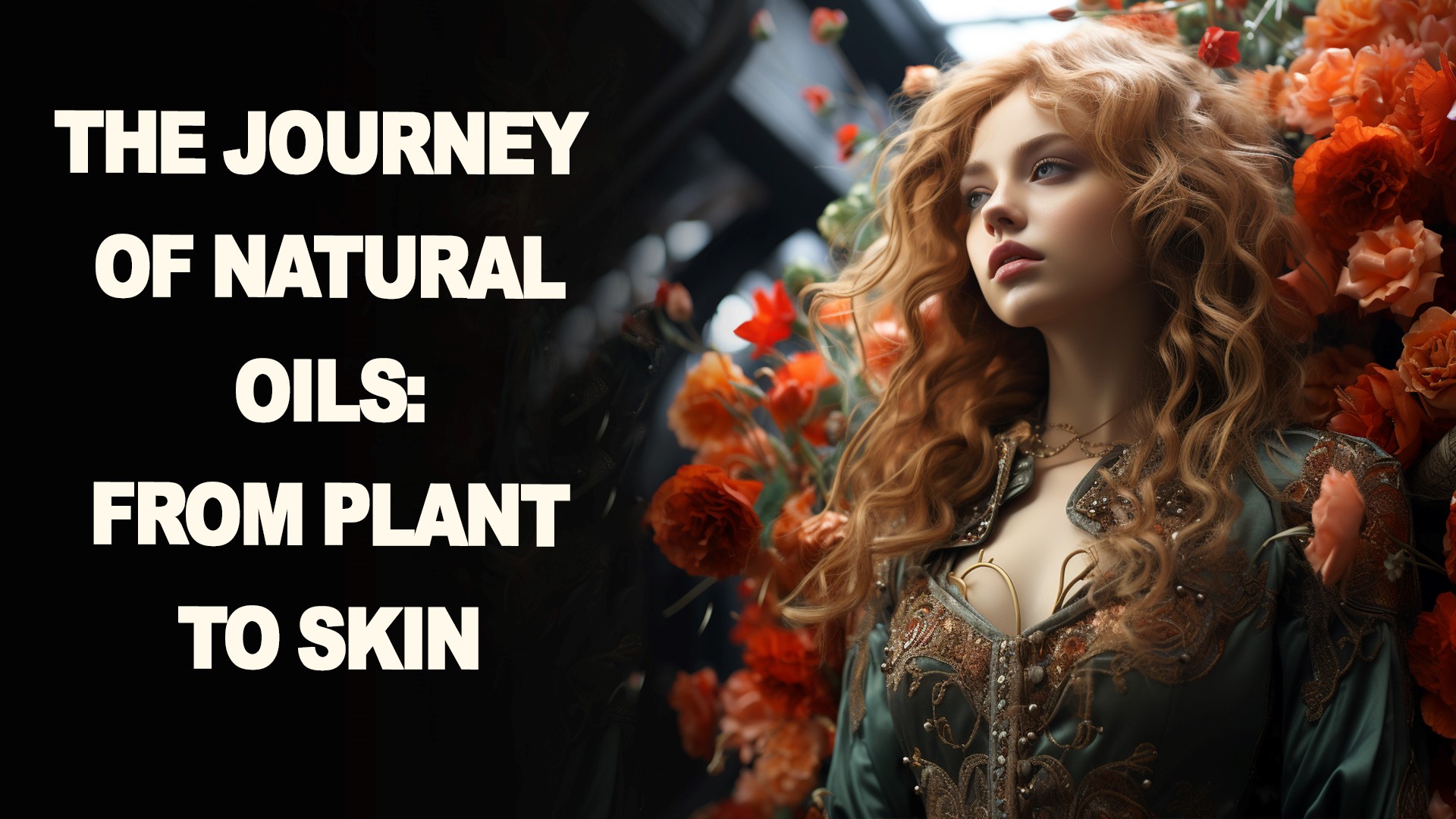Introduction to Natural Oils
In beauty and wellness, natural oils have become synonymous with purity and potency. These precious liquids, extracted from the earth’s flora, are not a new invention. For centuries, civilizations have tapped into the power of oils for their medicinal, therapeutic, and cosmetic benefits. But what exactly are natural oils, and why have they been popular recently?
Understanding Natural Oils
Natural oils are concentrated liquids extracted from plants, seeds, nuts, and flowers. They are considered the essence of the plant and are revered for their aromatic and therapeutic properties. They are distinguished from synthetic oils by their extraction method and their chemical-free purity. The fascination with natural oils in the contemporary skincare industry can be attributed to the growing awareness and demand for products that are not only effective but also environmentally sustainable and free from harsh chemicals.
Historical Use of Oils
The history of natural oils in skincare is as old as civilization itself. The ancient Egyptians were known for aromatic blends, using oils for embalming, perfumery, and skin protection. The Greeks used olive oil for its moisturizing properties, and in India, the Ayurvedic tradition incorporated many oils for health and longevity. These time-honored traditions have returned to the limelight as the world re-embraces natural, holistic living.
Extraction and Production Processes
The journey of oil from plant to skin is a testament to human ingenuity and respect for nature. The first step is sourcing raw materials. Ethical farming practices are crucial as they ensure the sustainability of the oils’ sources. Plants like lavender, rosemary, and tea trees are grown worldwide, but their qualities can vary depending on their native origins.
Sourcing of Raw Materials
Ethical sourcing involves responsible farming practices that prioritize the environment and the welfare of the farmers. It’s a symbiotic relationship where quality products result from healthy, well-cared-for plants. Plants are grown without harmful pesticides or genetic modifications, ensuring the oil remains as natural and organic as possible.
Extraction Methods
There are several methods to extract oils from plants, each with unique benefits. Cold pressing, for instance, involves mechanically pressing the plant material to expel the oil. This method is favored for preserving the oil’s nutritional quality. Steam distillation, on the other hand, uses steam to vaporize the oil, which is then condensed back into liquid form. This is particularly popular for extracting essential oils.
Solvent extraction uses solvents to separate the oil from the plant material, and CO2 extraction involves pressurized carbon dioxide to pull the oil from the plant. The latter is renowned for extracting oil without damaging its properties or leaving behind harmful residues.
Refinement and Bottling
Once extracted, oils undergo purification to remove any remaining plant matter or impurities. Quality control is paramount, ensuring that the oil meets stringent standards before it reaches the consumer. The final product is then packaged in a way that protects the oil’s integrity, usually in dark glass bottles that shield it from light damage.
Types of Natural Oils and Their Properties
Natural oils are as diverse as the plants they come from, each with its unique properties and benefits.
Carrier Oils
Carrier oils are usually derived from the fatty portions of plants and are used to dilute essential oils and carry them to the skin. Examples include jojoba oil, coconut oil, and sweet almond oil. They are often used as the base in skincare formulations, chosen for their ability to moisturize and nourish the skin.
Essential Oils
Essential oils are the concentrated essence of plants. They are potent and require careful handling, often needing to be diluted before use. They carry the scent and the soul of the plant, often used in aromatherapy for their healing properties.
Unique Compositions and Benefits
Each oil has a specific fatty acid profile, providing varying benefits. For example, oils rich in oleic acid are excellent for dry skin, while those high in linoleic acid are better suited for oily skin. They also contain vitamins and antioxidants, which can help to protect and repair the skin. Oils like argan, rich in Vitamin E, are renowned for their anti-aging properties.
The benefits of natural oils are vast and can be tailored to treat specific skin types or conditions. From reducing inflammation to promoting elasticity, the range of benefits is a testament to their versatility in skincare.
Incorporation in Skincare Routines

Incorporating oils into a skincare routine is an art that requires understanding one’s skin needs.
Personalizing Skincare with Oils
Knowing your skin type and concerns is the first step to personalizing your oil-based skincare regimen. Whether you are looking to combat dryness, control excess sebum, or provide a nutrient-rich aging antidote, there is an oil out there that can be tailored to your needs. Blending oils can also maximize benefits, creating a bespoke concoction that addresses multiple concerns simultaneously.
Application Techniques
Application techniques vary, but oils are generally best applied to damp skin to enhance absorption. They can be massaged directly onto the skin, providing therapeutic and beauty benefits. Alternatively, oils can be mixed with creams or lotions to improve their moisturizing properties or layered under other skincare products to maximize their benefits.
Routine Integration
Natural oils can be integrated into both morning and nighttime routines, with some oils being better suited for day use due to their lightness and others, with more intensive properties, ideal for night. Seasonal changes can also affect how and which oils should be used; lighter oils may be preferable in summer, while more prosperous, emollient oils are beneficial in winter.
Scientific Perspective on Efficacy and Safety
Despite the long history of oil use, scientific research provides a modern understanding of how oils work and their safety.
Research on Absorption and Effectiveness
Studies have shown that the molecular size of an oil affects its ability to penetrate the skin barrier. This has significant implications for the effectiveness of the oils, with smaller molecules being more readily absorbed than larger ones.
Side Effects and Allergies
Natural does not always mean safe for everyone. Some oils can cause adverse reactions in specific individuals, particularly essential oils, which can be potent allergens. It’s crucial to conduct a patch test before fully integrating an oil into your skincare routine.
Expert Recommendations
Dermatologists often champion oils for their ability to provide intense hydration and protection. However, they also caution that oils should not be used as a cure-all and are best used with other proven skincare ingredients and methods.
The Future of Natural Oils in Beauty and Wellness
The future looks bright for natural oils in the beauty and wellness industry. Their multifaceted benefits align with the move towards more sustainable, ethical, and holistic approaches to beauty.
Innovative Uses in Formulations
As research evolves, so too do the applications of oils. They are increasingly found in various products, from anti-aging serums to sun care. The fusion of ancient wisdom with modern science paves the way for innovative products that harness the best of both worlds.
Sustainable and Ethical Considerations
Sustainability and ethics are becoming non-negotiable for many consumers, demanding products that work but are also kind to the planet and its inhabitants. The natural oil industry is at the forefront of this, with many brands committed to ethical sourcing, production, and packaging.
Closing Thoughts
As we embrace the virtues of oils in our skincare routines, we honor the wisdom of the past while paving a path to a sustainable future. The use of natural oils is more than a trend—it’s a lifestyle choice that promotes health, beauty, and well-being. Their versatility and efficacy make them a timeless addition to any beauty regimen. As we continue to learn and adapt, oils will undoubtedly remain a staple in the skincare world.
Conclusion
Natural oils represent a convergence of nature, tradition, and science. They are not just ingredients; they are a testament to the enduring power of the natural world in our daily lives. As the beauty industry evolves, the narrative of natural oils continues to be written, blending the lines between past and present, science and nature, beauty and wellness. The journey of natural oils from plant to skin is a holistic one, speaking to the heart of what it means to care for ourselves in a world that is increasingly looking back to nature for answers. With their endless benefits and potential, natural oils will remain a vital part of the beauty landscape for years.
Practical Tips for Using Natural Oils
Embracing natural oils in daily beauty routines requires more than just selecting the right oil; it involves understanding the best practices to maximize their potential.
Blending and Customizing Oils
Customizing oil blends can cater to individual skin concerns, but it requires a bit of know-how. For instance, blending tea tree oil with jojoba oil can create a powerful combination for acne-prone skin due to tea tree’s antimicrobial properties and jojoba’s balancing effect on sebum production. The key is to respect the potency of essential oils and use a proper dilution rate with carrier oils to prevent skin irritation.
Layering Oils with Other Skincare
To incorporate oils effectively, one should consider their place within the broader skincare regimen. For instance, applying a face oil after water-based serums can help seal in the moisture while using oil before applying sunscreen can aid in its distribution and absorption without compromising protection.
Timing and Frequency of Application
Consistency and timing can affect the outcomes of using oils. While nightly applications of oils like rosehip can aid in skin regeneration during sleep, using lighter oils in the morning can provide a non-greasy glow and a good base for makeup.
Environmental Impact of Natural Oil Production
The production and consumption of natural oils have a footprint that must be considered as we strive for sustainability in the beauty industry.
Sustainable Farming and Harvesting
Sustainable practices in farming and harvesting natural oils ensure we maintain resources. Techniques like crop rotation, organic farming, and respecting the growth cycles of plants contribute to a more sustainable production process.
Packaging and Carbon Footprint
The environmental impact of packaging and shipping natural oils is significant. Brands are increasingly turning to recyclable or biodegradable materials and considering their carbon footprint when choosing how and where to produce and distribute their products.
The Role of Certifications
Eco-certifications can help consumers identify products that have been produced responsibly. Certifications like USDA Organic, Fair Trade, and Rainforest Alliance can guide consumers toward purchasing that align with their environmental values.
Future Trends in Natural Oil Use

The dynamic landscape of natural oils in beauty is set to evolve, influenced by consumer demands, scientific advancements, and global trends.
Technological Advancements in Extraction and Formulation
As technology advances, so do the methods of extracting and formulating oils. Innovations that allow for more efficient and less wasteful extraction processes are rising. Similarly, formulation technologies that increase the stability and efficacy of oils in skincare products are becoming more common.
Tailored Oils for Personal Genetics and Biomes
The future may hold more personalized oil-based products tailored to individual genetic makeup and skin biomes. Understanding the unique needs of one’s skin can lead to more effective and customized skincare solutions.
Global Influence and Accessibility
With the digital age making the world smaller, oils from every corner of the globe are becoming accessible to a broader audience. This not only introduces a variety of new oils to the market but also highlights the importance of fair trade and supporting local communities.
Conclusion
The journey of natural oils from a plant to our skin is one of connection—to the earth, history, and ourselves. It represents a full-circle moment where the simplest ingredients can have the most profound effects. As we navigate the ever-expanding universe of beauty and wellness, natural oils stand as a testament to the power of nature. They remind us that sometimes, the best things are untampered, nurtured by the soil, and brought to life by the sun.

